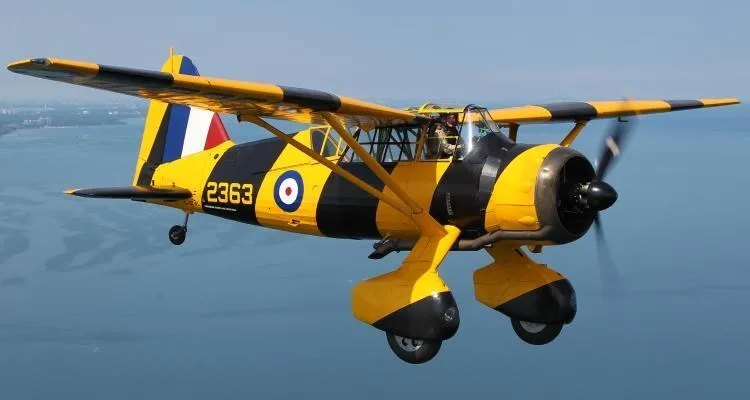Westland Lysander

Canadian Warplane Heritage Museum
Westland Aircraft of Yeovil, UK, started to design an Army Cooperation aircraft for the British Air Ministry, in June 1935. The first Lysander flew a year later and demonstrated a remarkable short field performance that today would be seen in a STOL aircraft. At the outbreak of war in September 1939, seven RAF squadrons equipped with Lysanders were sent to France in support of the British Army. In May-June 1940, 118 Lysanders were destroyed in action and 120 aircrew were killed or taken prisoner. These severe losses showed that the old ideas about army support aircraft were out of date and the future lay in fighters like the Hurricane.
The most daring use of Lysanders in WW II was with the Special Operations Executive, which supported the Resistance in German occupied France and Belgium, by flying in agents and picking up escapees. It was during these night operations, that the Lysander came into its own, using its remarkable STOL capabilities to fly into the small fields marked out by the Resistance.
The first Canadian built Lysanders rolled out of National Steel Car factory at Malton, Ontario in September 1939 and later were delivered to RCAF No. 110 (Army Co-operation) Squadron at Rockcliffe, Ontario. In February 1940, No. 110 became the first RCAF squadron to be ordered overseas to Britain, becoming No. 400 Sqn..
By late 1941, most Canadian built Lysanders had been transferred to the British Commonwealth Air Training Plan (BCATP), where they were used for target towing at gunnery training schools. National Steel Car, which became Victory Aircraft, stopped building Lysanders in September 1942, as it started to gear up to manufacture Lancaster bombers. 1,652 Lysanders were built between 1938 and 1943; 225 of them in Canada. Lysanders served with the RAF, RCAF and the RAAF, as well as the air forces of seven other nations. Canadian Warplane Heritage Museum
 Lysander - Kestrel Publications
Lysander - Kestrel Publications
CASPIR Aircraft Groups:
RCAF On Strength (329), RCAF 400 Squadron (1), Canadian Aircraft Losses (26)Lysander Mk. III TT 1546
Ex RAF V9747. Taken on strength at Fleet Aircraft, Crumlin, Ontario. Converted to Target Tug during erection at Fleet, completed 26 June 1942. To No. 1 Training Command when completed. Assigned to No. 31 Bombing & Gunnery School in Picton, Ontario. On 30 Dec 1942, the a/c took off on a drogue towing flight with Flight Sergeant W. Spencelay as the pilot and LAC J.S. Holt, as the drogue operator. The a/c crashed in the water in Gravelly Bay, after an engine failure which was subsequently determined to have been caused by the seizure of exhaust valves within the engine. The crew perished. The wreckage was salvaged and sent to No. 6 Repair Depot at Trenton on 5 Jan 1943, for write off action following the crash.
1942-01-20 Taken on Strength 2019-08-20
1942-December-19 Accident: 31 Bomb & Gunnery School Loc: Gravelly Bay PEast County Names: Holt | Spenceley
1942-12-30 Accident Category A 2021-12-22
1943-02-20 Struck off Strength reduced to spares and produce 2021-12-22





 Commonwealth War Graves Commission
Commonwealth War Graves Commission Library and Archives Canada Service Files (may not exist)
Library and Archives Canada Service Files (may not exist) Glenwood Cemetery, Canada
Glenwood Cemetery, Canada Lysander
Lysander Wikipedia Lysander
Wikipedia Lysander Harold A Skaarup Web Page
Harold A Skaarup Web Page RCAF.info - RCAF Station Picton Ontario
RCAF.info - RCAF Station Picton Ontario